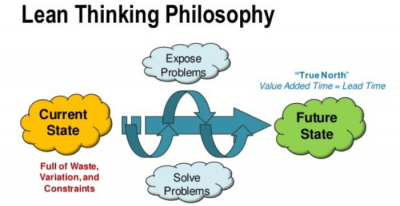As discussed in Part 1, the recent introduction and successful application of Lean Thinking in health is generating a belief that continuous improvement (a product of Lean) can be delivered in the context of health care, as long as key organisational principles are in place.
One of the principles of the Toyota Production System is ‘learning to see’: investment in training staff on how to observe waste in their systems and to understand the true cause of the problem.

Mapping the Current State
Determine the start and end points of the process(es) from the patient perspective and begin to map all the main steps in between. To get an accurate picture of the current process, you may actually need to walk the process, considering how, when and where people move during the process, who the customers and suppliers are, how information is recorded and exchanged, how technology is applied, how steps in the process are sequenced, what triggers the work, and how much time is spent at each step and for the entire process, including waiting time. Stay focused on high-level steps and focus on the usual process, not on the exceptions.
Identify waste
Looking at your map of the current process, identify any flow problems or any steps that do not bring value to patients. This is the waste in your process. Lean design identifies seven categories of waste, which can be applied to the practice setting:
- Overproduction involves completing any work that isn’t needed right now, such as prescribing antibiotics for a viral infection.
- Motion refers to any unnecessary movement of patients, staff or physicians.
- Material movement refers to any unnecessary transfers of materials or information, such as the hand-off of patient intake forms from the front office to the back office to the physician.
- Waiting refers to any delays or idle time involving the patient, physician or staff, such as patients waiting for an exam room to be readied or staff waiting for a report to be faxed.
- Inventory involves any information or materials waiting to be used, such as a stack of unread laboratory reports or piles of patient booklets sitting in the waiting area.
- Inappropriate processing refers to handling work in a way that is excessive, such as completing all paperwork in triplicate or scheduling separate visits for acute care and wellness care when one visit would suffice.
- Rework involves any unnecessary work required because of an error, such as sending the patient back to the laboratory because a lab order was incomplete.
In part 3 we will review examples of identifying current state and identifying the different types of waste identified in the process.
